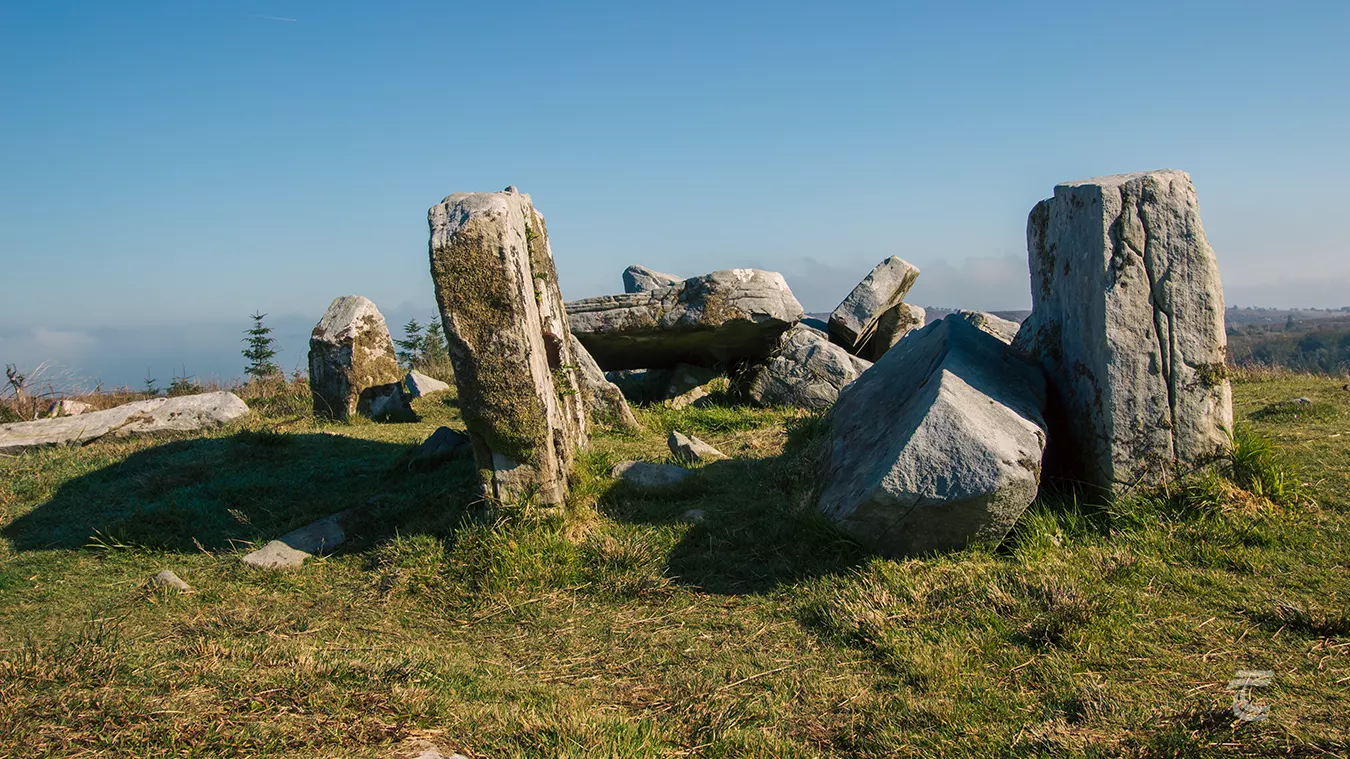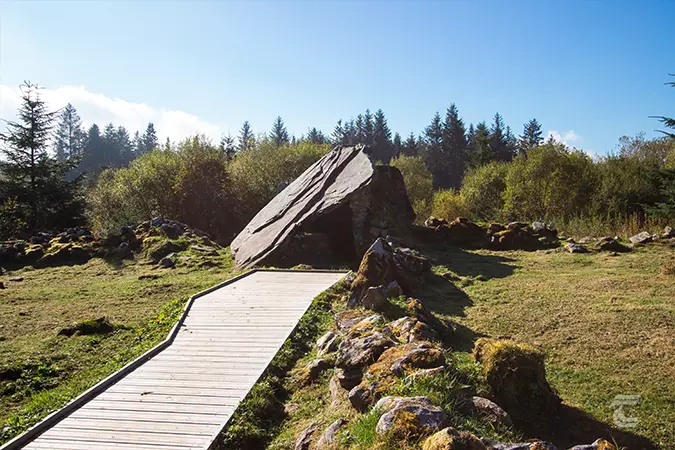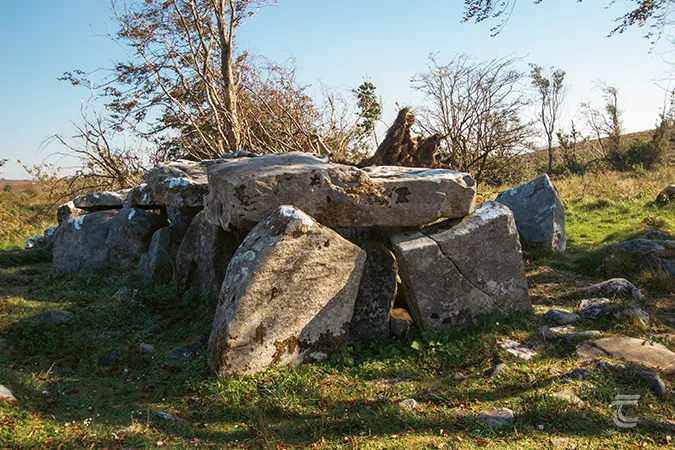Cavan Burren
This remarkable upland limestone plateau contains 5,000 years of fascinating archaeology. While walking through the Cavan Burren Park you can encounter an array of megalithic tombs, including the ‘Giant’s Grave’, dating to around 2500 BC, as well as a promontory fort, glacial erratics, prehistoric rock art, 18th and 19th century settlements, sinkholes and the remains of a pre-glacial river.
There are a number of key features in the Cavan Burren which can be found along the park’s trails. Along the Green Trail you will find Tullygobban Wedge Tomb. The name ‘wedge tomb’ refers to its simple wedge shape, which is created by the decrease in the monument’s height and width from the front to the rear. Wedge tombs are the most numerous of Ireland’s megalithic tombs, and date to the Chalcolithic period. This period falls between the Neolithic and Early Bronze Age, and is when the first copper tools and weapons began to be created and used in Ireland. Tullygobban is thought to be named after Gobán Saor, a master craftsman from Irish folklore. You can hear more about wedge tombs in this fascinating episode of Amplify Archaeology Podcast with Dr. Neil Carlin.
The Green Trail also brings you to a portal tomb, known as the Calf House. Portal tombs are also known as dolmens, and generally date to the earlier half of the Neolithic period, making this tomb likely to be over 5,000 years old. Typically they have huge capstones which are balanced on two upright portal stones at the front, and a back stone at the rear which creates a small chamber. Portal tombs are most commonly found in lowland settings, near rivers or streams. The tomb’s unusual name comes from the fact that it was reused in the 19th and 20th centuries as an animal shelter.
All along the Green Trail you can see erratics, huge boulders that were picked up by glaciers over 14,000 years ago and dropped here when the glaciers melted away. Other natural features include sinkholes, where a mighty river once disappeared underground.
For practical information about visiting this site Click Here

A megalithic tomb in the Cavan Burren • Cavan
More Trails Through Cavan Burren

A trail through the Cavan Burren Geopark • Cavan
Cavan Burren’s Orange Trail contains another wedge tomb known as the Giant’s Grave. This is one of the largest and best preserved wedge tombs in Ireland. The capstone of the Giant’s Grave has a large amount of ‘cup and ring’ rock art. Cup and ring decoration can be found on stone monuments all along the western seaboard of Europe, from the Iberian Peninsula to Scotland. There is also evidence of a surrounding kerb which may have held a cairn (a mound of small stones that covered the tomb). The name of this tomb comes not only from it colossal size, but also from a local legend that tells of a giant who was competing for the love of a giantess. He attempted to jump over the nearby gorge (known now as the Giant’s Leap) and fell to his death, and was then buried in this tomb.
The Orange Trail passes through this gorge, which is the evidence of a river which once flowed through it before the last Ice Age. This river was eradicated by the glaciers as they reshaped the landscape and removed the source of the water. Along the path you can also see limekilns, which were once used to improve the soil and for the whitewashing of houses.
The Purple and Red Trails pass by a clifftop promontory fort, built during the Iron Age around 2,000 years ago. More glacial erratics are displayed here, one of which was used as a Mass Rock during Penal times. There are also numerous sinkholes, the largest is known as the Legnaveagh Sinks and is a whopping 500m in diameter. There is also Tullygobban Lough, and the remains of 18th and 19th century agricultural field systems.
You can find out more about the more than 10km of walking trails through Cavan Burren here.

A trail through the Cavan Burren Geopark • Cavan
Upper left: a portal tomb in the Cavan Burren • Lower left: the wedge tomb also known as ‘The Giant’s Grave.’ • Right: a boardwalk through the Geopark
Top: a portal tomb in the Cavan Burren • Middle: a boardwalk through the Geopark • Bottom: the wedge tomb also known as ‘The Giant’s Grave.’
Cavan Burren Visitor Information
A stunning upland limestone plateau, offering a wealth of archaeology and natural heritage.




